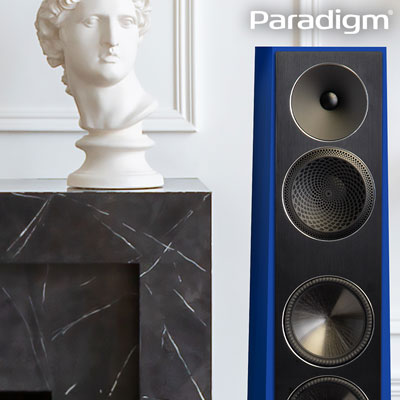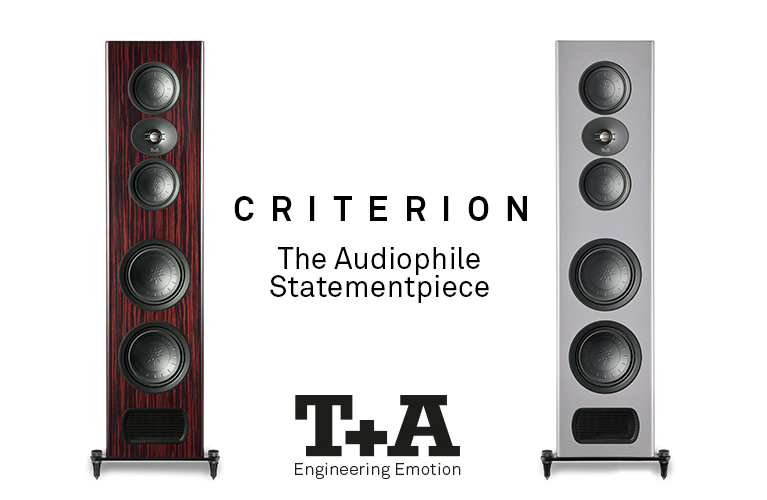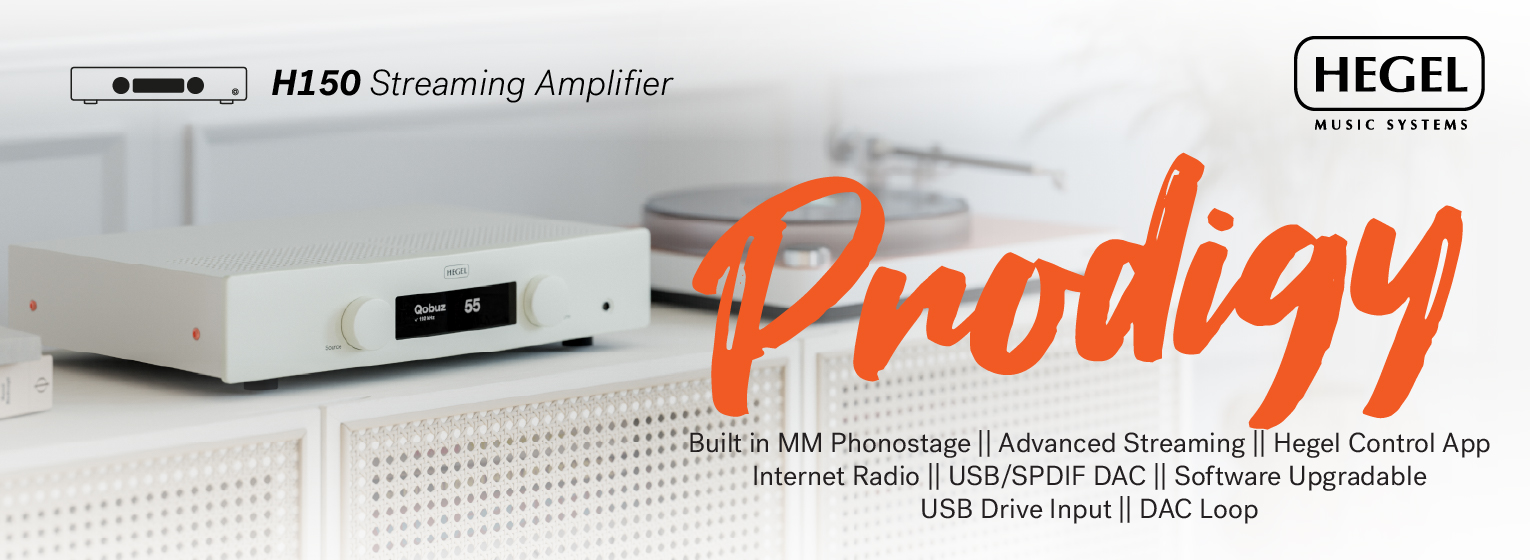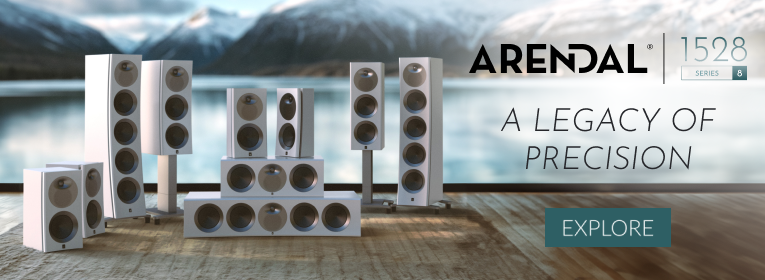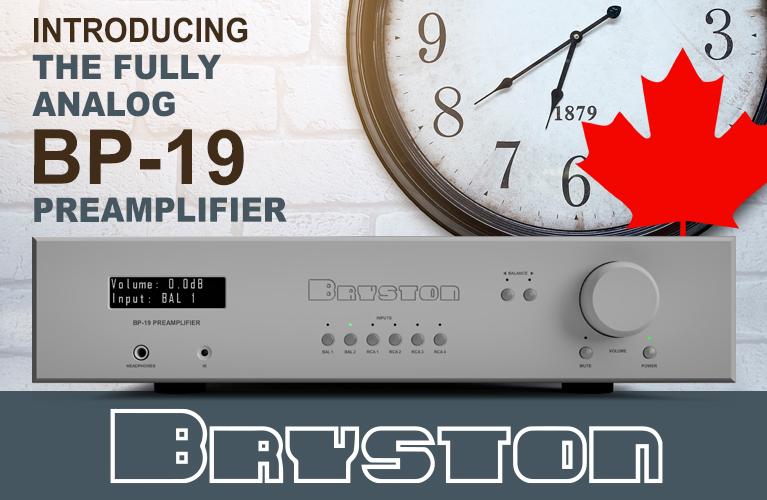 Even with the huge variety of products available today, high-end loudspeakers with built-in network streamers are still few and far between. There are quite a few streaming active speaker systems that target mainstream buyers, including those from major brands such as JBL, KEF, PSB, and Technics. But truly aspirational wireless speaker systems are rarer. Bang & Olufsen’s Beolab 90 is one exception. There are a few others from the likes of Goldmund and Meridian—and more recently, Focal.
Even with the huge variety of products available today, high-end loudspeakers with built-in network streamers are still few and far between. There are quite a few streaming active speaker systems that target mainstream buyers, including those from major brands such as JBL, KEF, PSB, and Technics. But truly aspirational wireless speaker systems are rarer. Bang & Olufsen’s Beolab 90 is one exception. There are a few others from the likes of Goldmund and Meridian—and more recently, Focal.
A year ago, in October 2024, the acclaimed French brand debuted its first high-end wireless loudspeaker system. The Diva Utopia features Bluetooth, Wi-Fi, and ethernet connectivity and has a built-in network streamer that supports Apple AirPlay 2, Google Cast, Qobuz Connect, Spotify Connect, Tidal Connect, and UPnP. A complete system sells for US$39,999, CA$49,999, £29,999, or €34,999.
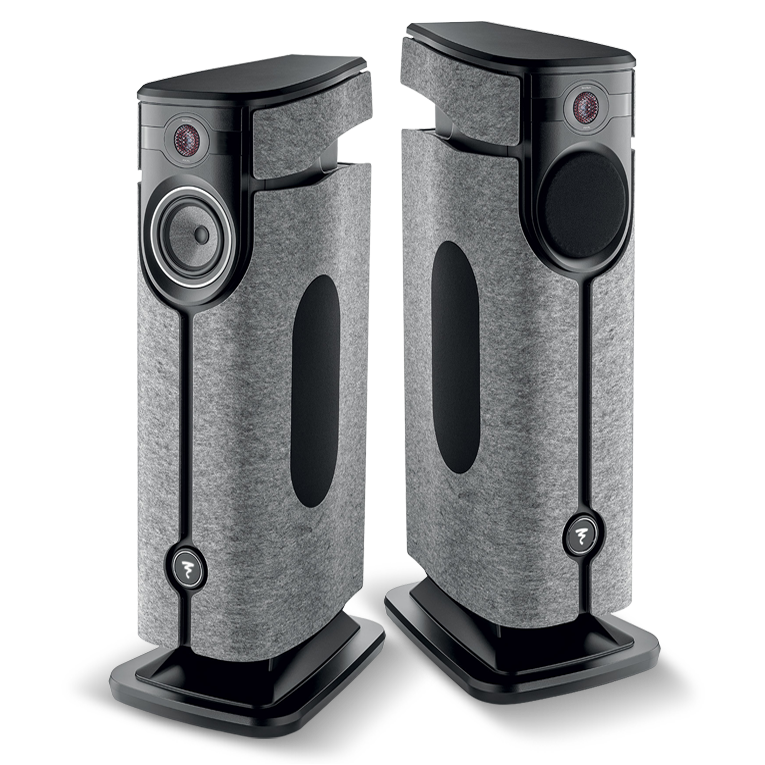
This past July, Focal announced a larger model, the Diva Mezza Utopia (US$69,000, CA$97,249, £55,000, €65,000). The word mezza is an Italian term meaning middle or halfway, and as the Diva Mezza Utopia is a step up in size from the Diva Utopia, we can only speculate that Focal has even bigger plans for the product category it calls Connected Loudspeakers. We’ll keep an ear out, but in the meantime, let’s have a close look at the first system in the series, the Diva Utopia.
Many readers will be aware that Focal merged with the legendary UK brand Naim Audio in 2011. Focal and Naim are now are part of VerVent Audio Group. The two brands have collaborated on several products, including the Naim Mu‑so 2nd Generation and Mu‑so Qb 2nd Generation tabletop music systems and the Focal Bathys noise-canceling headphones. Both brands participated in the development of the Diva Utopia, a project that took over five years to complete. The Diva Utopia and Diva Mezza Utopia are sold exclusively in Focal Powered by Naim stores.
Description
The Diva Utopia is a three-way, six-driver, bottom-vented design. High up on each speaker’s front baffle are a 6.5″ midrange-woofer and, above it, a 1.1″ beryllium inverted-dome tweeter. Focal supplies removable grilles for the speakers’ midrange-woofers. Each speaker has four 6.5″ woofers, two on each side of the enclosure, mounted in a push-push, force-canceling configuration. The side-mounted woofers allow for a slender profile, providing a sense of height.
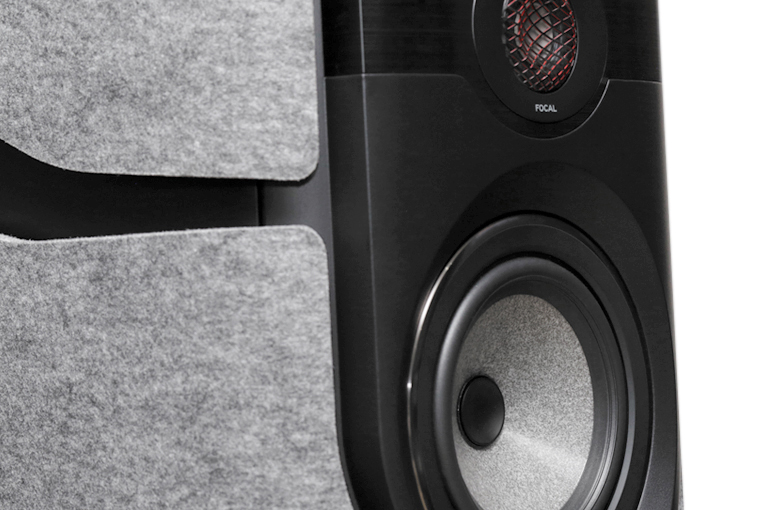
The “M” beryllium tweeter concept used in the Diva Utopia comes from Focal’s Utopia Main studio-monitor line, but features a thinner diaphragm that offers increased rigidity, a new motor design, and an improved surround borrowed from the Utopia III Evo line. The midrange-woofer comes from Focal’s Sopra N°1 premium standmount speaker, and was chosen over a straight midrange driver because, according to Focal, it delivers greater dynamics and a more visceral experience at the listening seat. The woofers are adapted from those used in the Sopra N°2 and N°3 floorstanders. The woofers and midrange-woofer all feature Focal’s “W” composite-sandwich cones, which are made from layers of glass fiber arranged over a foam core.
This is an imposing system, but it’s also very attractive. Each enclosure measures 47.6″H × 16.5″W × 22″D and weighs 141 pounds. Rather than wood and MDF, the enclosures are constructed from high-density molded polymer. Focal says this material has several advantages over traditional MDF: it allows for highly specific optimized structural reinforcement and variety of composition, resulting in a rigid, anti-vibration structure, while maximizing internal volume. The number of joints can be minimized—the whole Diva structure is made up of just three pieces. This is important, Focal points out, because joints are potential failure points in traditional MDF enclosures. Finally, polymer is environmentally friendlier than MDF, since it generates much less waste in manufacture.
The polymer body is covered on its front and sides with four floating dress panels made from a felt material compliant with Oeko‑Tex standards for sustainability and environmental safety. The removable panel pieces are attached with industrial Velcro. In May 2025, Focal announced optional lacquer-finished dress panels for the Diva Utopia in three colors: Black High Gloss, Dune High Gloss, and Off White High Gloss. The felt panels are attractive and appear durable, but might not be ideal for households with cats!
The Diva Utopia enclosure’s curvaceous body has several striking design elements. The felt panels are separated horizontally so that they contrast with the underlying black body. On the front near the bottom, a backlit power indicator with the Focal logo peers out from between two panels. Up top, a red-and-black double grille contrasts with a brushed-aluminum structure encircling the tweeter.
The enclosure proper sits on an injected-aluminum base with a ramp that vents air from the bottom-firing bass port out into the room. Focal says the Diva Utopia’s ground-radiation vent is engineered so that it causes no dynamic compression—this structure would not be practical with MDF construction. Casters on the bottom make it easier to move each speaker into its desired location, after which the supplied spiked feet can be attached.
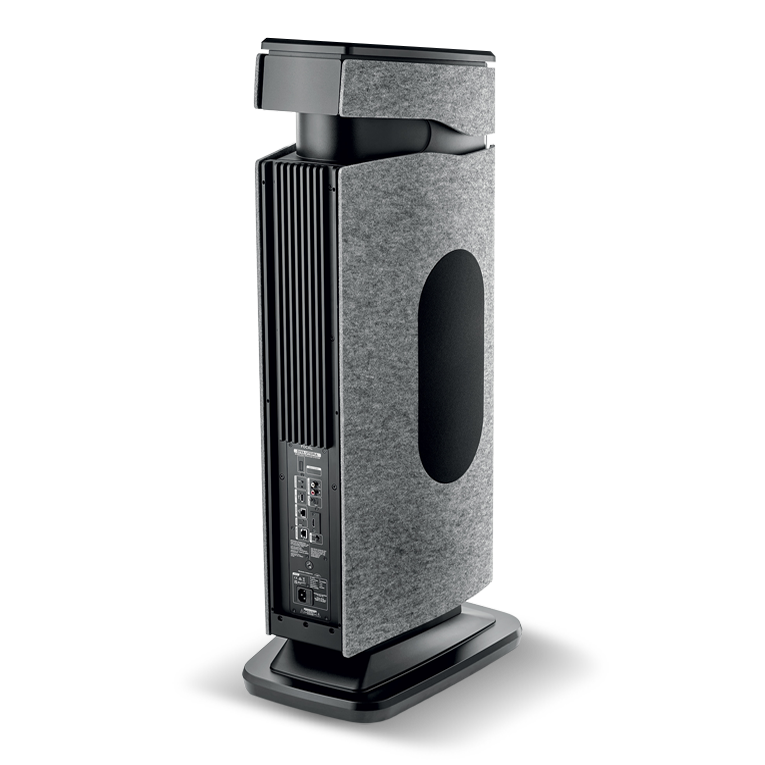
Each Diva Utopia enclosure houses four class-AB amplifiers designed by Focal’s sister company, Naim Audio: a 75W amp for the tweeter, a 75W amp for the midrange-woofer, and two 125W amps for the four woofers. The primary speaker also contains the network streamer and input connectors. Finned heatsinks on the upper rear of each speaker dissipate heat from the amplifiers and other electronics. At the bottom are three-prong IEC power inlets—both speakers need to be plugged in to the wall.
Below the heatsink on the primary speaker is a jack panel with a pair of analog line-level inputs (RCA), an optical S/PDIF (TosLink) input, an HDMI eARC port, a USB Type-A port for attaching an external drive containing music files, and two RJ45 connectors—an ethernet port for connection to a network router and a Speaker Link output for sending digital audio to the secondary speaker. The secondary speaker has only the RJ45 Speaker Link input port and IEC power inlet.
The Diva Utopia also incorporates ultra-wideband (UWB) technology for sending PCM audio to the secondary speaker wirelessly. With a wired connection between the two speakers, resolution is 24-bit/192kHz. With a wireless connection, it’s 24/96. Focal says the UWB connection is stable, with no data loss or compression and imperceptible latency. The primary speaker can be designated to play left- or right-channel output using the companion Focal & Naim app, which is available for Android and iOS.
The Diva Utopia has built-in Bluetooth, with support for the SBC, AAC, and aptX Adaptive codecs. Via USB, ethernet, and Wi-Fi, the Diva Utopia can accept PCM audio up to 24/384 in WAV, AIFF, FLAC, and ALAC formats, and DSD64 and DSD128 in DSF and DSS formats.
As noted, the Diva Utopia’s streaming module, called the Naim Pulse Platform, supports AirPlay 2, Google Cast, Spotify Connect, Qobuz Connect, Tidal Connect, and UPnP. The Focal & Naim app provides in-app access to Qobuz and Tidal, as well as to internet radio and podcasts. The app is also used for controlling functions such as room correction (more on that later) and for playing locally stored music. The Diva Utopia is not Roon Ready, and full Roon support is not on the roadmap. However, Roon users can stream to the Diva Utopia via AirPlay or Google Cast.
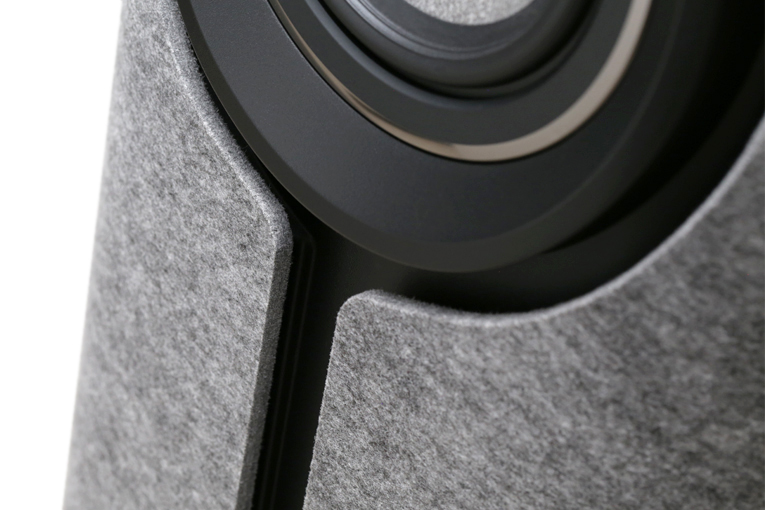
Incoming digital signals are passed on to an Analog Devices SHARC+ DSP that implements the digital crossover and performs other functions. These functions include Focal’s ADAPT (Adaptive Acoustic Personal Tuning) room-correction system and a DSP-based speaker-protection system that monitors the drivers and amplifiers and, if necessary, limits power output to prevent damage. From the DSP, audio data flows to Burr Brown PCM1791 DAC chips (there are three in each speaker, one for each frequency band), then from the DACs to Naim-designed preamps and power amps for each frequency band.
Maximum SPL is rated at 116dB at 1m, more than adequate for medium-sized to large listening rooms. Specified frequency response is 27Hz–40kHz, ±3dB; the -6dB point is 24Hz.
Included with the Diva Utopia is a remote control that employs the Zigbee wireless communications protocol. The satin finish adds a touch of class to the remote’s light plastic construction; however, the overall feel is run-of-the mill. It is backlit and looks good sitting on a table, with its clean lines and Focal logo. Functions include power on/standby, volume up/down, mute, play/pause, track-skip forward and backward, source selection, favorites (this function lets you scroll through pre-programmed internet radio stations that you’ve set up in the Focal & Naim app), and brightness of the speakers’ illuminated logos.
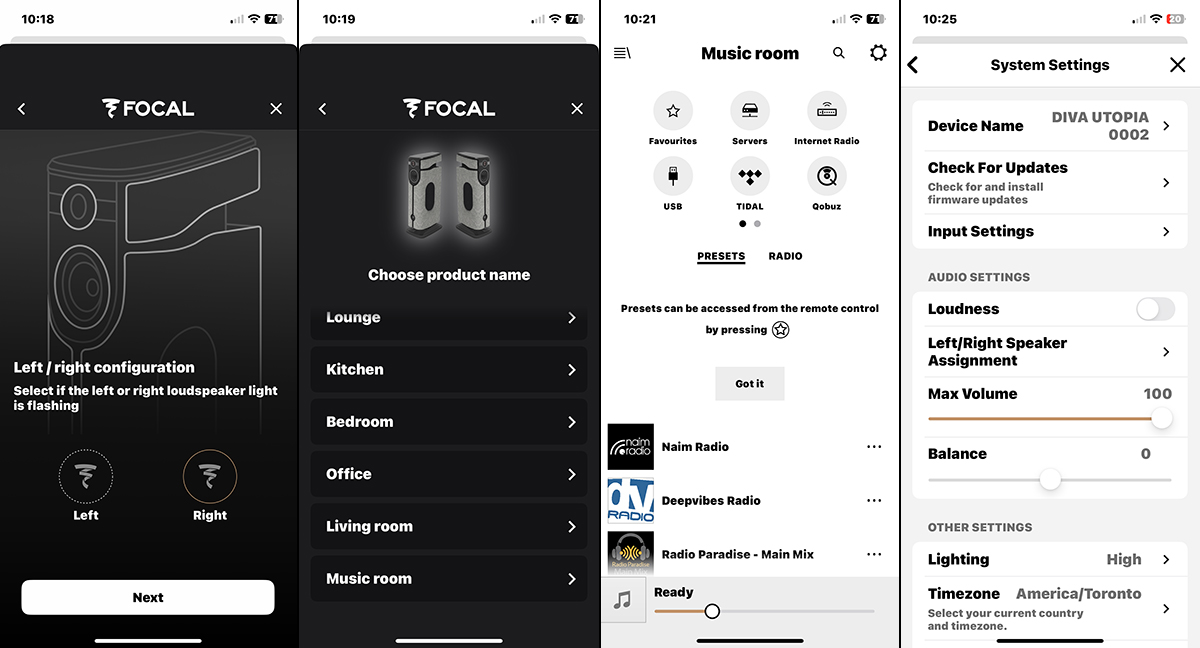
I suspect many people will leave the remote sitting on the table and use the Focal & Naim app instead, because the app provides many additional functions. Despite a slightly awkward layout, I found the app easy to use. But for playing music from Qobuz and Tidal, I preferred using the native apps for those services.
Setup
I maneuvered the Diva Utopia speakers using their built-in casters, then installed the supplied floor spikes once I was happy with their sound as positioned. The speakers ended up 3.9′ from the wall behind them, 1.6′ from the nearest side walls, 8.8′ apart, and 9.1′ away from my listening seat, with a slight toe-in toward the listening position. I used the provided OEM power cords and left the grilles off.
I used the Focal & Naim app to connect the system to my Wi-Fi network and listened to several songs. On about half the tracks I listened to, I experienced very brief dropouts. I wasn’t surprised by this because there is a lot of Wi-Fi traffic in my listening room, not just from devices on my own network, but from neighbors’ networks as well. I had a long network cable on hand and used that to connect the primary speaker’s ethernet port to my network router.
I also tried using the UWB wireless connection between the two speakers, and that worked flawlessly. But for my critical listening, I elected to use the supplied 16′ interlink cable so I could experience this system at maximum resolution.
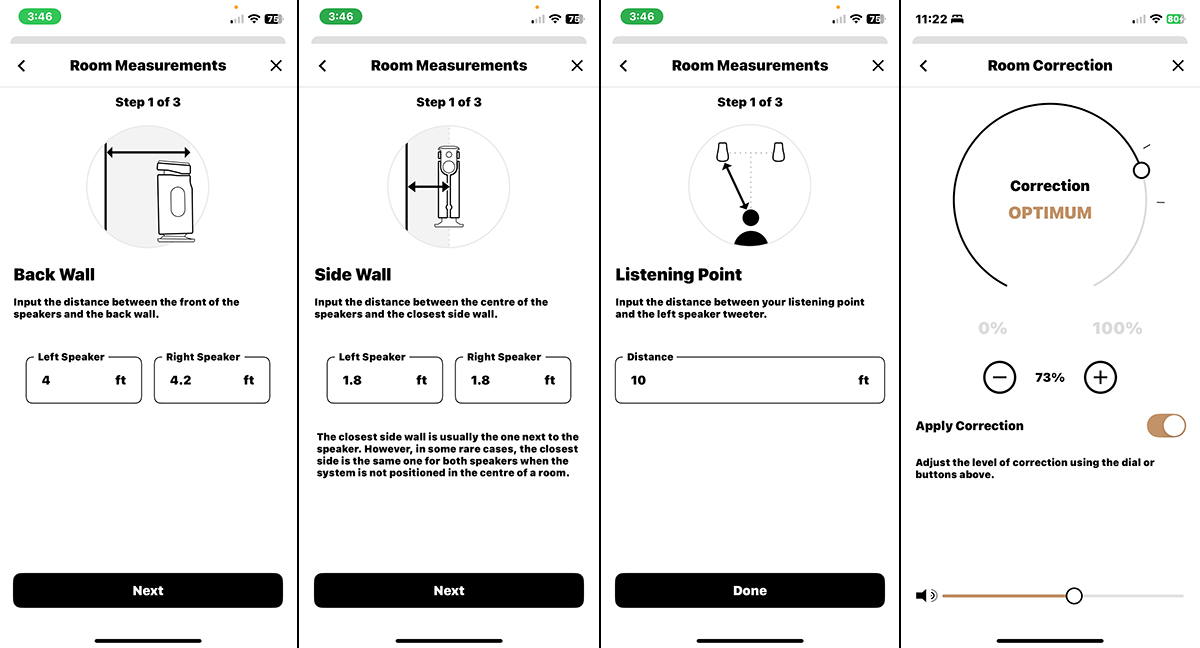
My next step was to set up Focal’s ADAPT room-correction system. This is not an automatic system like Dirac Live—it does not use a calibration microphone. The Focal & Naim app guides you through a series of steps. First, you manually enter the distance between the speakers, the distances to the front and side walls, and the distance to the listening position. In the next two steps, labeled Room Symmetry and Tonal Balance, the speakers play test tones while you listen and adjust a slider control so that the phantom image for each test tone is right in the center. Based on this input, the app calculates correction filters and lets you choose how much correction you want to apply.
In my acoustically treated room, which includes bass traps as well as wall treatments at the first and second reflection points on the side walls and on the front and back walls, the effect was clearly audible; I heard a widening of the soundstage and a more immersive soundscape, with slightly larger images that possessed more natural outlines. I ended up selecting 73% correction and used this setting for my evaluations. I expect that in less symmetrical listening spaces with no room treatment, the effects of ADAPT would be even more dramatic. The whole process took about ten minutes. ADAPT optimizes output for only the main listening seat, and there’s no option to save multiple profiles. However, I had no issues when listening outside the sweet spot and still preferred leaving ADAPT engaged.
For most of my listening I cued up music in the Qobuz and Tidal apps on my iPhone 12, and used the services’ Connect functions to play music through the Diva Utopia system. I also streamed music from my Roon server, played music from a drive connected to the USB port, and spun CDs on a Michi Q5 CD player (review pending) and LPs on my vinyl rig, which comprises a Rega Planar 10 turntable, Rega Apheta 3 MC cartridge, and Gold Note PH‑10 phono stage with the matching PSU‑10 power supply. But for my first listening session, I opted to try an unusual source for a system as high-performing as this one: Bluetooth.
Listening
In an email exchange, Focal said it included Bluetooth connectivity as a convenience feature primarily “for wireless TV or non-Wi-Fi use cases.” So why did I start with Bluetooth? I wanted to see how this system would perform with different options for streaming, and that seemed the logical place to start. Besides, how often does anyone get to try out a $40,000 Bluetooth speaker?
After pairing my iPhone 12 with the Diva Utopia and selecting the Diva Utopia’s Bluetooth input, I cued up “Night and Day” from Christy Baron’s 2004 compilation Retrospective (24‑bit/96kHz FLAC, Chesky Records / Qobuz). My immediate reaction was, Wow, this is the absolute best Bluetooth loudspeaker I’ve ever heard! The sound quality was amazing, considering the fact that my iPhone was transcoding and compressing Qobuz’s hi-rez stream to 256kbps AAC. Baron’s voice had superb clarity, the cymbals had lovely shimmer, and the double bass and percussion had commendable detail. Imaging was very good, with a sense of depth and layering, along with surprising articulation in the low end.
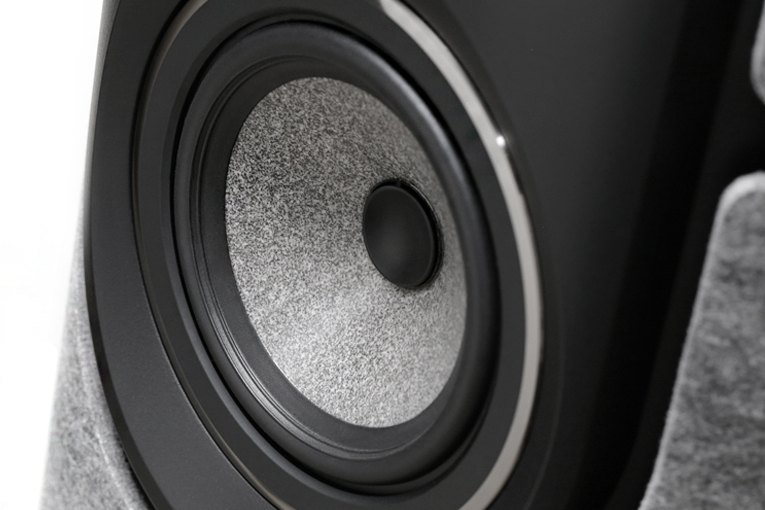
Next, I played the same track through the Diva Utopia using Qobuz Connect. Now I was hearing a 24/96 lossless version of Baron’s rendition of this Cole Porter classic. The music felt smoother and more relaxed, revealing the sound with Bluetooth to have been a little threadbare by comparison. With the hi-rez stream, subtle details were reproduced more fully. Instruments had better timbral accuracy and greater harmonic color. So yes, the Bluetooth option was convenient and surprisingly good-sounding, but it didn’t do full justice to this beautifully recorded track and the wonderful Diva Utopia system.
I love Roon’s interface and editorial content, and use it for much of my day-to-day listening. As mentioned, the Diva Utopia is not Roon Ready, but I was able to stream to the Focal system from Roon via AirPlay. However, AirPlay limits resolution to 16/44.1. Compared to the 16/44.1 stream of “Night and Day” via Roon and AirPlay, the 24/96 stream via Qobuz Connect sounded more open and natural, with greater harmonic nuance and inner detail.
Also, in extended use with Roon and AirPlay, I experienced occasional very short skips. I asked Focal about this, and they attributed the skips to AirPlay. I never experienced this issue with Tidal Connect or Qobuz Connect, or when streaming from the Focal & Naim app.
To assess how the Diva Utopia would fare with an analog source, I played LongGone, a 2022 jazz album featuring saxophonist Joshua Redman, pianist Brad Mehldau, double bassist Christian McBride, and drummer Brian Blade (LP, Nonesuch 075597910018). On “Disco Ears,” with its relaxed swing rhythm, the Focal speakers provided a tonally saturated and sultry sound, while preserving the sense of tempo in the music. The quickness and flow of the music, together with the fullness of the sound, helped me fully delve into the listening experience. I couldn’t help noticing the crisp percussion that the Diva Utopia system delivered so proficiently as it relayed microdynamics with aplomb. Redman’s sax sounded delectable, possessing a sweet consistency that I found captivating.
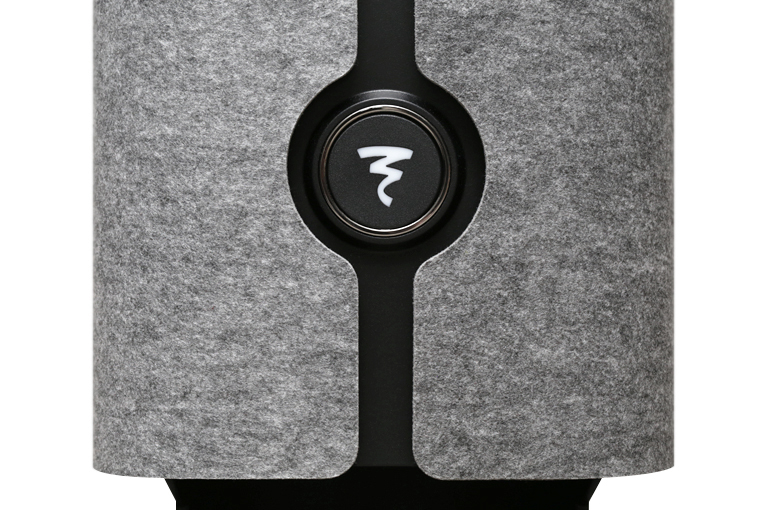
After I connected my Western Digital My Passport Ultra 1TB drive to the Diva Utopia’s USB port, I was able to navigate to the music folder using the Focal & Naim app. There I found and played a DSF file of “I Can See Clearly Now” by the Holly Cole Trio from their 1993 album Don’t Smoke in Bed (DSD64 rip from Analogue Productions SACD CAPP 049 SA). The opening double-bass plucks were tight-sounding, with authentic thickness and resonance—the Diva Utopia system portrayed David Piltch’s instrument with a realistic sense of physicality and grandness. Cole’s voice was nothing less than succulent, her vocalization crisp, defined, and detailed, while possessing natural warmth.
The Focal & Naim app displays the tree structure of any drive attached to the system, sorting folders and files in alphanumeric order. It doesn’t use the metadata in your music files, which means you can’t sort the contents of an attached drive by artist name, album name, or genre. If you plan to attach a USB drive to a Focal streaming active system, be sure to name folders and files so it’s easy to find the music you want. In particular, start the file name of each song with the track number, so that songs are displayed and played in the correct order, rather than alphabetically.
For the balance of my listening, I cued up music in the Qobuz app on my iPhone and used Qobuz Connect to play it through the Diva Utopia system.
Kicking things up a notch, I put on one of my favorite tracks, “(Looks Like) Someone Got Ahead of Schedule on Their Medication” by Charlie Hunter, from his 2016 album Everybody Has a Plan Until They Get Punched in the Mouth (24/96 FLAC, GroundUP Music / Qobuz). This track served as an ideal showcase of the Diva Utopia system’s prodigious dynamic capabilities. The bass-guitar notes and simultaneous kick-drum hits were thunderous and concussive—and convincingly live-sounding. As I cranked the volume so that the system was delivering peaks over 80dB, the Diva Utopia performed with absolute confidence, seeming to have vast stores of untapped headroom. Hunter’s guitar phrases and Bobby Previte’s cymbal strikes were shockingly realistic. The Diva Utopia also revealed the reverb in the recording, generating a sense of space and immersing me in the performance.
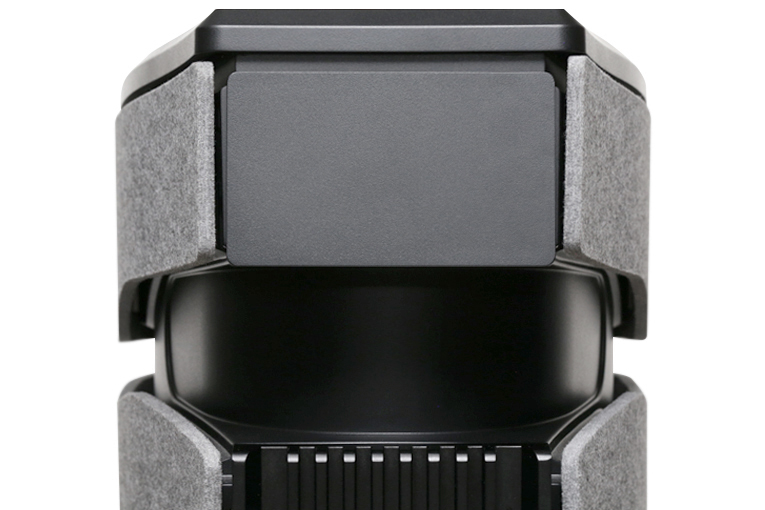
This past summer, I heard rumblings that Phil Collins’s health was rapidly declining. But these rumors seem to have been unfounded, with recent updates confirming he’d had knee-replacement surgery. All this attention motivated me to listen to the 2016 remastered version of his 1982 album Hello, I Must Be Going! (24/96 FLAC, Rhino / Qobuz). The famous track “I Don’t Care Anymore” opens with Collins’s signature solo drum sequence, followed by synth notes with an unmistakable 1980s sound. Through the Focal system, the snap of the drumsticks against the skins was vivid and visceral, with each percussive punch followed quickly by the hollow thud of the drum shells. Echo and reverb were copious, contributing to a generous soundstage that went beyond the placement of the speakers. The overall sound possessed a natural warmth and fullness. The Diva Utopia delivered excitement and musical engagement along with detail and nuance on this classic 1980s track.
Speaking of delicacy and finesse, I concluded my listening with a jewel of an artist I discovered only recently. Cécile McLorin Salvant isn’t new, but she’s new to me, and WomanChild (24/96 FLAC, Mack Avenue / Qobuz), her 2013 debut album, has been in heavy rotation in my listening room. Through the Focal system, the opening patter of the brushes on the drumskins in her rendition of Rodgers and Hart’s “I Didn’t Know What Time It Was” was delightful; the light slaps and papery scrapes of the bristles against the skins were extremely refined. The cymbals were similarly pristine, their gentle shimmer faultlessly delicate and extended. The Diva Utopia system produced a beautiful and extended treble—something I’ve come to expect from Focal’s beryllium tweeters, which have been refined over several generations. Salvant’s voice sounded sumptuously natural, coming across like a warm cappuccino on a cold morning. The Diva Utopia expertly presented her careful phrasing and mesmerizing voice with beautiful tone and presence. And I’d be remiss if I didn’t praise the authentic image size, generous texture, and timbral accuracy of the double bass.
Comparisons
I compared the Diva Utopia with my reference system, which has a more traditional configuration, comprising a pair of Dynaudio Confidence C2 Signature floorstanding loudspeakers, two Bryston 7B3 monoblock amplifiers, and a Bryston BR-20 streaming preamplifier acting as a Roon endpoint. I found the Diva Utopia to sound fuller and warmer in general than my reference setup. The bass was significantly more authoritative, with greater weight all the way from the upper bass down to the notes you can feel in your body. While there was no denying the Diva Utopia system’s greater sense of scale compared to the C2s, the Dynaudio-Bryston setup created a slightly larger soundstage in terms of width and height. The Dynaudios’ overall presentation was more laid-back, yet it offered finer detail in the treble, midrange, and upper bass. However, from the mid- to low bass, the Focal system dominated. The Dynaudio speakers provided a bit more harmonic intricacy and transparency, while the Diva Utopia system delivered a somewhat warmer and smoother midrange and a consistently smoother treble that was kinder to less-well-made recordings.
Although my Focal Electra 1008 Be 2 standmount loudspeakers are much smaller than the big Diva Utopia floorstanding system, I couldn’t resist comparing them, given their shared heritage. From the get-go, the family resemblance in their sonic signatures was apparent. The Electra 1008 Be 2s did have less midrange presence and sounded more laid-back, likely due to the difference in amplification. Of course, the Diva Utopia system provided significantly more weight and dynamics in the mid- to lower bass. It also had a more vibrant character than the Electra standmounts. And the Diva Utopia demonstrated greater fine detail retrieval and harmonic gradation. Image sizes were slightly larger with the Diva Utopia setup, yet I found the overall soundstage just a touch wider with the Electra 1008–Bryston combo.
Conclusion
Focal’s Diva Utopia system is a technical marvel, providing superb functionality, wonderful ease of use, and flexible connectivity, combined with outstanding audio performance. During my listening, it consistently delivered abundant detail and musical nuance, without necessarily seeming like the most revealing or transparent system in its class—which makes this system very accommodating to lesser recordings.
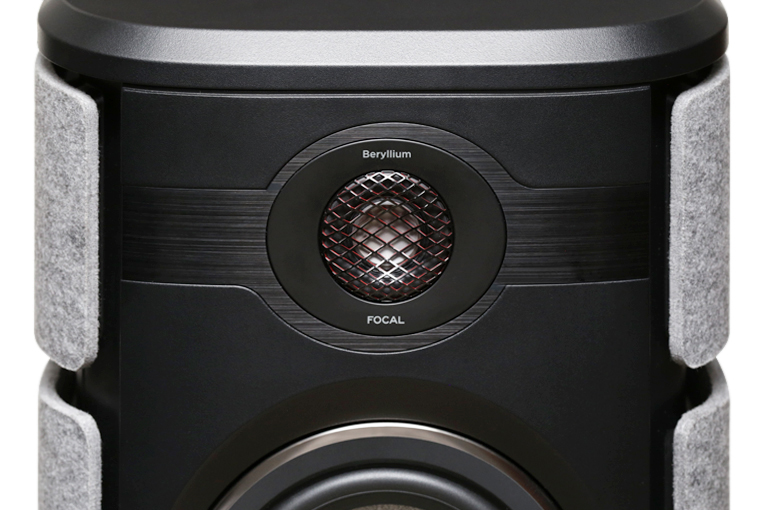
Being a high-performance active wireless music system, the Diva Utopia is a very attractive option for those seeking a top-performing audio system in a stylish and décor-friendly package. At US$40K, this system may initially seem expensive. But once you consider what a pair of Focal passive floorstanders and a full Naim separates system would cost, it begins to look like a relative bargain, with the added benefits of simplicity and ease of use. I know I’m going to miss listening to this wonderful system. I will also greatly miss how easy it makes it to attain true high-end sound.
. . . George de Sa
george@soundstage.com
Associated Equipment
- Loudspeakers: Dynaudio Confidence C2 Signature, Focal Electra 1008 Be 2
- Foundations: Quadraspire SV3T audio rack; Target MR‑24 loudspeaker stands mass-loaded with sand
- Turntable: Rega Planar 10 with Rega Apheta 3 MC cartridge
- Phono stage: Gold Note PH‑10 and PSU‑10
- CD player: Rega Apollo, Rotel Michi Q5
- Streaming preamplifier: Bryston BR‑20
- Power amplifiers: Bryston 7B3 monoblocks
- Music server: Roon Core on Mac Mini 16GB/256GB
- Hard drive: Western Digital My Passport Ultra 1TB USB HDD
- Cables: Audio Sensibility Statement speaker cables, interconnects, and power cables; Pangea AC-9 Mk 2 power cables; Zavfino 1877 Fusion balanced (XLR) interconnects; Van Damme XLR interconnects, Furutech ADL Alpha Line Plus (RCA) interconnect; Furutech ADL Formula 2 USB cable
- Network: Netgear wireless modem
Focal Diva Utopia streaming active loudspeaker system
Price: US$39,999, CA$49,999, £29,999, €34,999
Warranty: Five years, parts and labor
Focal JMlab
108 Rue de l’Avenir, 42350 La Talaudière
France
Phone: +33 4 77 43 57 00
Website: www.focal.com
Focal Naim North America
313 Rue Marion
Repentigny, QC J5Z 4W8
Canada
Phone: 1-800-663-9352 (USA); 1-866-271-5689 (Canada)
Website: www.focalnaimamerica.com



